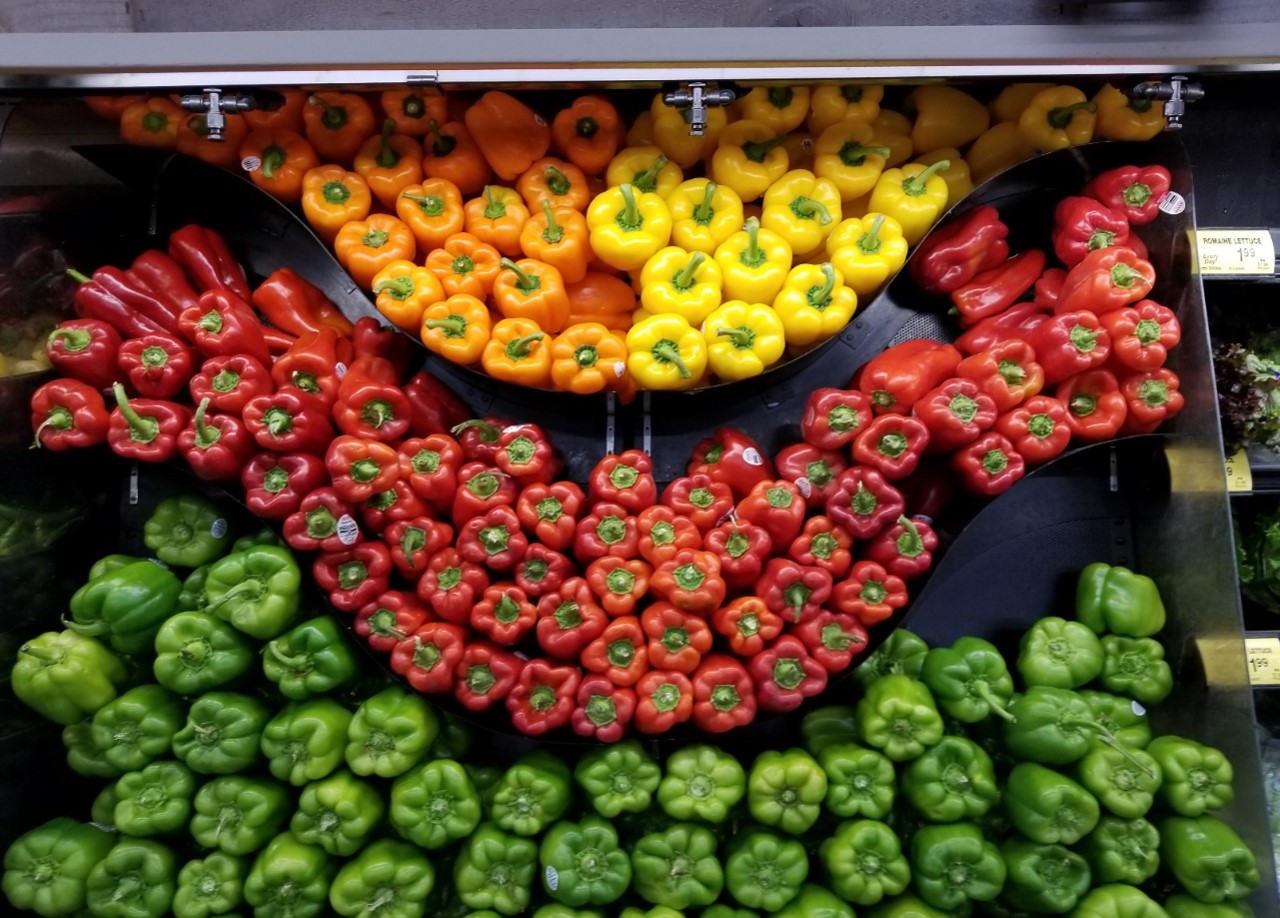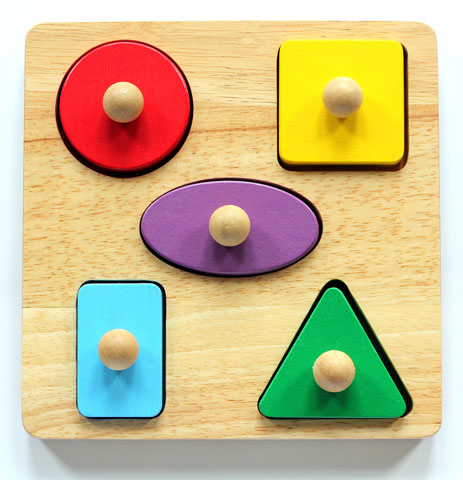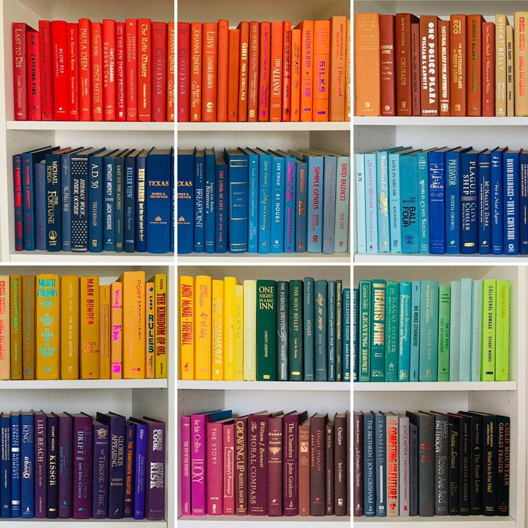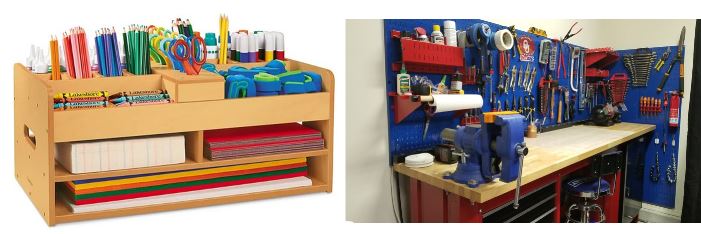23 Organizing Tangible Objects

Tangible objects are physical resources that you can touch and see. They are the most common type of resources that we interact with and organize. Tangible objects are often organized according to physical properties like size, color, or shape because the human visual system quickly and automatically pays a lot of attention to those properties.
This photo of the peppers arranged by color in the supermarket demonstrates this principle of using a property that “jumps out” at you. Because people shopping for peppers are usually selecting them by their color, this is the most effective way for them to be organized.
When you were a baby, you learned about tangible objects and their properties by holding them, dropping them, throwing them, and putting them in your mouth. When you began to play with toys, you probably had a set of plastic or wooden blocks. They differed in shape, size, and color. This taught you about these properties so you could use them when you organized other types of things.

You probably played with “inset” puzzles where you developed organizing and motor skills by putting plastic or wooden shapes into the matching hole in a board.
When you got a little older you played with “jigsaw” puzzles where the pieces fit together, which required that you consider shape, size, and color at the same time. You also learned to sort your clothes, which added the properties of texture and material to your set of organizing principles.

However, not every tangible resource is best organized using physical and perceptual properties. What if books were organized by the color and size?
Activity-Based Organization
Another very useful organizing principle for tangible objects is to group things that are used together in activities or tasks. This task-oriented approach to organizing is sometimes called a taskonomy to contrast it with a taxonomy, which groups things according to their shared properties.
For example, if you do a lot of art projects, it would be very efficient to store all of your supplies in a desk designed for that purpose. Similarly, many people organize all their household tools in the garage using a tool workbench that keeps all the tools visible, making them easy to find and easy to put away.

If you like cooking (or helping someone else cook) you are familiar with another kind of activity-based organization. If you are following a recipe, things go better and faster if you start by collecting all the ingredients and all the cooking resources you need and putting them in the order that you will use them.

This idea has a fancy French name that you pronounce as “MEEZE ON PLASS,” which means “Putting Into Place,” but you don’t have to be French to do it! You can apply this method to any project that has many steps, each of which requires some new resources to be added to what you’ve already used.

